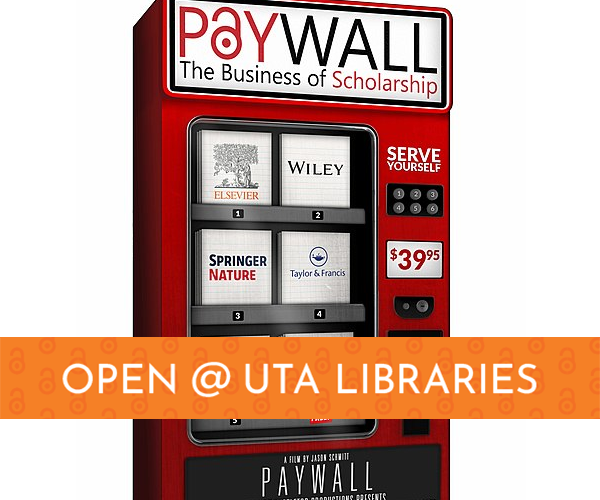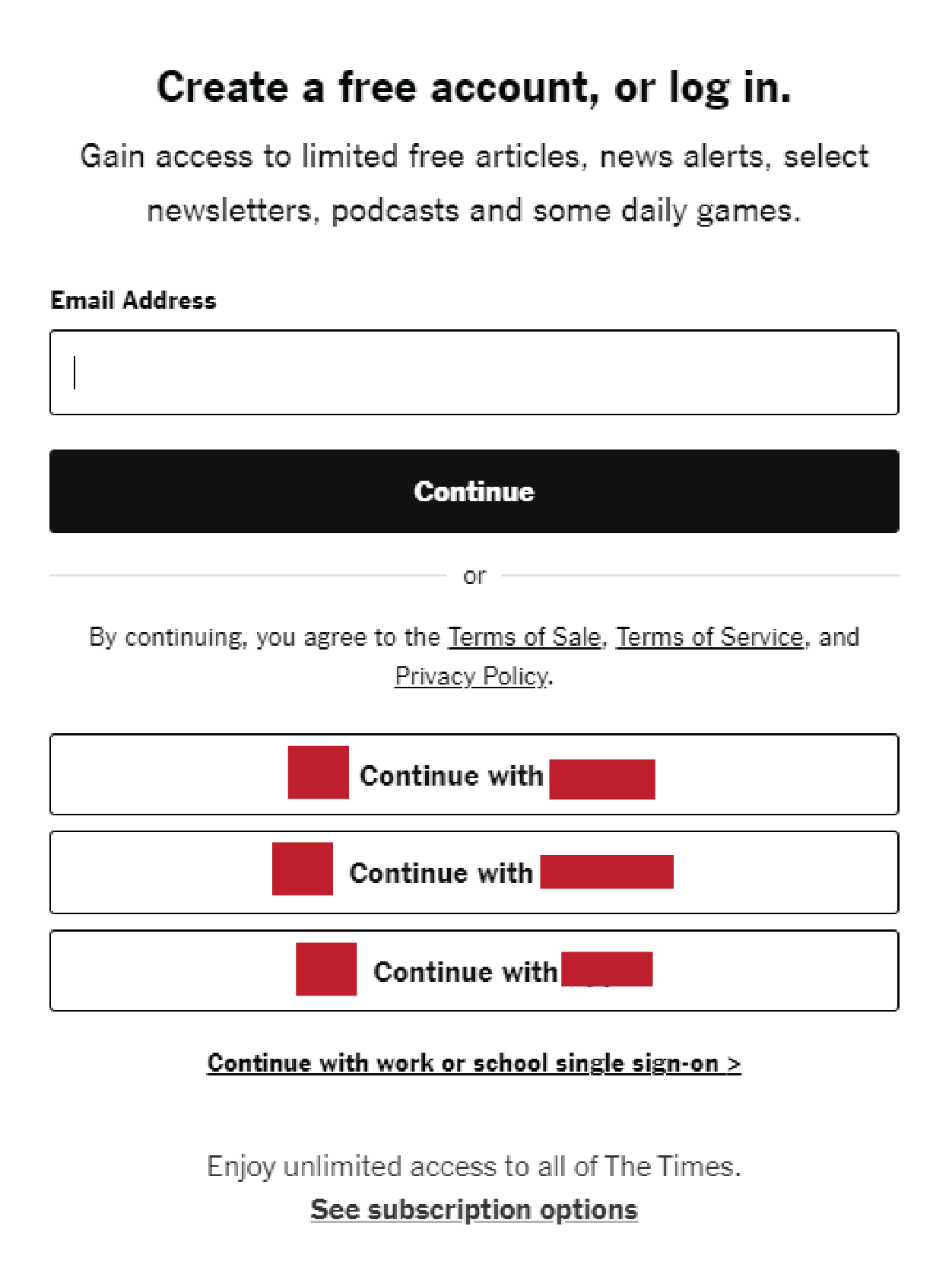
by Leah McCurdy

Most readers of this Open @ UTA Libraries blog series will have heard of the term “paywall.” For those who haven’t, it refers to the practice of restricting access to content by requiring payment (either as a subscription or one-time purchase); basically, the opposite of open access. The term came into the vernacular as digital online content became the norm and we all wanted access to it. So, things like the binge-worthy shows on Netflix and your favorite Anime on Crunchyroll are behind a paywall. You must pay to have access to that content (assuming you’re seeking the legal mechanism to access that content ;)).
I can hear readers’ thoughts echoing across time as I write this... “yes, Leah, life ain’t free.” If someone identifies content that they can sell as a commodity and be profitable, they likely will do just that. No shade, for the most part. But many of us, meaning academics and librarians specifically, have asked, “why is knowledge/education so costly and why are so many paywalls put between a student or researcher and the knowledge they seek?” And “how did we get to this point where education is unaffordable but academic publishers have 40-50% profit margins?”
Paywalls really became more mainstream as newspapers were adjusting business models in the 2010s. Free online access to their content was not offering profit margins they were used to. Installing paywalls for most of or all their content reduced readership but brought in funds beyond advertising dollars. Almost all (still extant) newspapers now function through this model.
Does anyone recognize this paywall pop-up?

Screenshot of the account creation/login and paywall pop-up on the New York Times website (captured March 2024), with famous logos and company names redacted so as to not provide even more free promotion than they already get.
Yep, you’ve seen it. That’s the New York Times paywall. You just googled an important topic relevant to your life right in this moment and you find that someone has written an intriguingly titled NYT article, but wait... you can’t access it. To read it and get that info-seeking fix, you will need to scale the NYT paywall.
When you click continue, you see that it’s not THAT expensive, only $1 per week. In my experience, I oscillate back and forth, given my immediate interest in that specific content, about whether I will pay. There are other options though, like The Guardian newspaper, that don’t invade your browser with a paywall pop-up but with a “consider donating” or “support us” pop-up.

Screenshot of the “support us” pop-up on The Guardian website (captured March 2024).
We’ve all seen the similar Wikipedia banner seeking donations to the Wikimedia cause. I’m privileged to currently live a life in which I can afford the $1 per week NYT subscription or the more expensive Netflix and Crunchyroll subscriptions if I wanted to. I can afford to make donations to The Guardian and Wikimedia if I feel compelled.
But when you scale that paywall, it is not just that $1 per week; it is also your personal information that you are outlaying. One thing that is getting harder to afford (both financially and in terms of stress/mental health) is our privacy. We are all getting more scam calls, more phishing emails, and more stories about how someone we know is trying to dig themselves out of the hole created by a scammer or fraudster, or a company one considers reputable but didn’t have the right protections in place for their consumers.
My main issue with most paywalls is that I will have to give all these companies my personal information to access their content or as a contributor to their platform. The paywall necessitates access restriction or enabling via a subscriber database. If I’m on that subscriber database (along with all the other ones that I have given into), my personal information is that much more likely to be sold off to data brokers, advertisers, and scammers or hacked by bad actors who then invade my life in new, irritating (and potentially harmful) ways.
This blog post was originally going to have a different trajectory tracing a summary of publishing (printing) history, the concept of ‘informational scarcity’ that is the foundation of the publishing industry (‘we have it and you want it, so pay us’; i.e. “information capitalism” (Lamdan 2019)), and how that commercialized approach to knowledge spreading and awareness building doesn’t feel right or ethical. That trajectory will have to wait. In the middle of writing this post, I came to realize that my current brain is more concerned about what the paywall system/strategy means for my and your privacy because of what I have learned over a year of being a librarian.
Thanks to colleagues like Amy Castillo, I have learned how much it actually costs to ensure that our faculty and students have access to the research databases they need to learn and be scholars. Before I moved to the Libraries, I was a faculty member not aware at all how much it takes to ensure that I could access JSTOR (or any other research/journal/publication database) anytime, anywhere I needed (given that I use my UTA credentials, of course). I’ve also learned, because of my particular role at UTA Libraries, that academic libraries in particular have for a long time been in a (mostly) polite but also incredibly passionate struggle with commercial publishers about costs, ethics, and privacy.
For several years now, librarians have been increasingly concerned about how the publishers that we feel obligated to pay subscriptions for access to their mega-databases and research indexes (to support the researchers and students at our institutions) are using/abusing patron data (e.g. Lamdan 2019). For example, through products like LexisNexis and Westlaw, multi-billion-dollar publishing conglomerates RELX Group (parent company of Elsevier) and Thomson Reuters amass patron/user data that they can package and sell (through various data brokerage channels) to policing services like the US Immigration and Customs Service (ICE) (ibid).
Librarians found out that this was actually happening through a series of really sad consequences. This meant that law students and faculty doing research on such platforms to support immigrant rights and/or individuals seeking legal assistance, may have inadvertently been sending data into the immigration policing system that put vulnerable people, and library patrons, in even more vulnerable positions. Librarians felt that it was their ethical duty to keep this sort of thing from happening. This has meant that Librarians think very carefully about which publishers and vendors they continue to work with and include patron and data privacy clauses in negotiated contracts.
Refer to Big Data and Real Dollars in the Publishing Industry (Tchivzhel 2024) for an example of the for-profit perspective on this topic (and the fact that it is no secret). Since librarians became aware of these big data practices by publishers, there has been reprioritization and renewed conversations about the ethics required of libraries (fundamentally not-for-profit institutions) and our relationships to for-profit companies and overtly commercialized products. This is one of the reasons that the open movement has been so driven by academic libraries across the world.
I’m already far-afield of my original point for this post. My new point is a series of wishes that relate to both my professional life working in an academic library and my personal life:
I wish I could access (and pay for, if that is necessary) content I want without having to give up my privacy and personal information to companies I don’t trust.
I wish that those companies would not sport with my intelligence via advertising, branding, and fancy graphics to attempt to lull me into a false sense of security about using their platforms.
I wish that “privacy policies” were much more understandable, less litigious, and shorter.
I wish I had control over my own personal information, where it is at any given moment, and whether I consent to its use in that moment.
I wish that educational and scholarly pursuits were free of paywalls.
I wish that multi-billion-dollar companies were accountable to the public.
I hear another echo across time from the future readers of this post... “keep dreamin’, Leah.” But I persist because these are real things in real people’s lives that we need to really work on. Contact librariesops@uta.edu if you have questions, concerns, or wanna chat about your own wishes.
The cover image for this blog post is "Paywall film poster with banner" by Leah McCurdy, licensed CC BY-SA 4.0. It is a derivative of "Paywall documentary poster,” licensed under CC BY-SA 4.0, and was modified by cropping and adding the "Open @ UTA Libraries" banner.
Add new comment